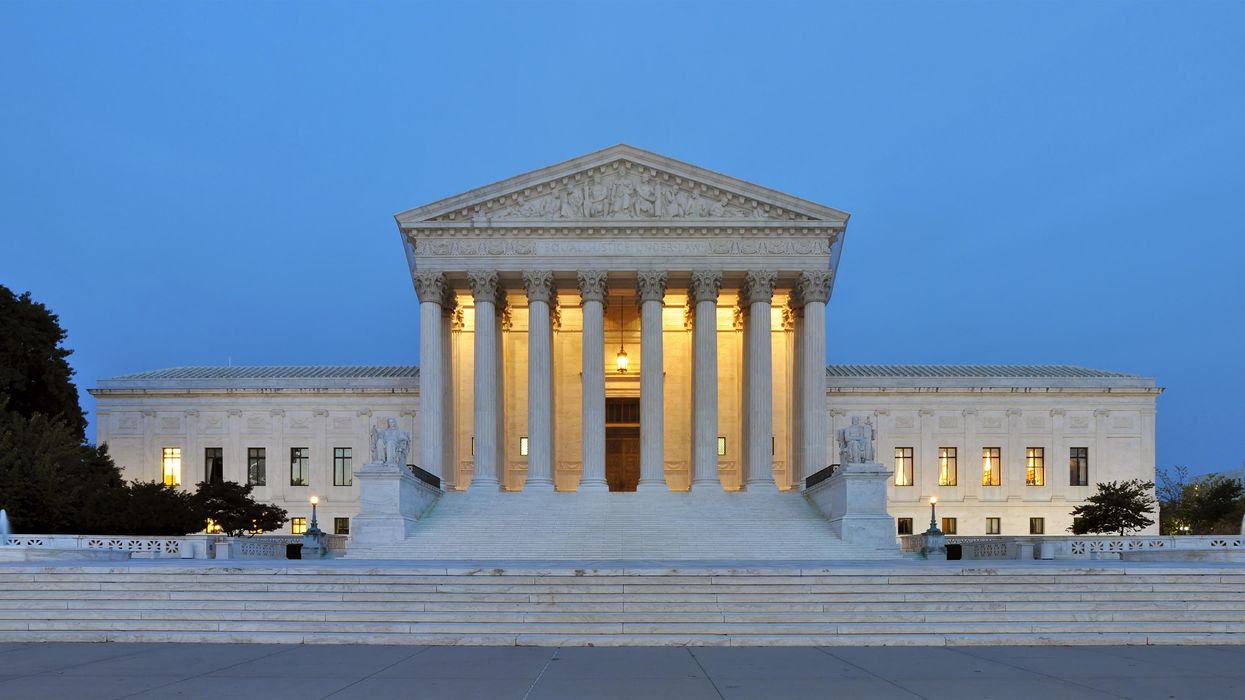LaRue writes at Structure Matters. He is former deputy director of the Eisenhower Institute and of the American Society of International Law.
As the Presidential Commission on the Supreme Court of the United States conducts its "analysis of the principal arguments ... for and against Supreme Court reform," one proposal gaining attention would limit each justice to a single, 18-year term. Designed to standardize departures and reduce confirmation partisanship, the idea offers considerable benefits. But one flaw is likely fatal.
The advocates' case is otherwise strong, as recounted by professors Paul Collins and Artemus Ward, or detailed in professor Akhil Amar's testimony before the commission on July 20. With fixed appointments every two years (in odd years), each president would nominate two justices per term. A smoother, less volatile confirmation process would not be upended by any one nomination. The experience of single-term presidents like Jimmy Carter, who appointed zero justices, and Donald Trump, who appointed three, would not be replicated.
Other benefits include: disincentivizing the now-common practice of presidents appointing less-experienced, young justices so they serve longer with greater personal impact; preventing justices from timing their departure to occur during terms of like-minded presidents; and lessening the possibility of declining performance as elder justices age.
Such a schedule is admirably clean and impactful. It has been endorsed by Our Common Purpose, the highly regarded project of the American Academy of Arts & Sciences, which includes the proposal in its 31 recommendations to improve U.S. elections and civic life. Why doubt its efficacy? Because of the hyperpartisanship everyone wants curtailed.
The plan's flaw is revealed when Collins and Ward claim that fixed terms "would help insulate the court from becoming a campaign issue because vacancies would no longer arise during election years." Amar makes the same mistake when he says that scheduling the appointments "in odd years further reduces the political temperature of Court confirmation battles by staging these battles in nonelection years." Such "years" may have relevance when a Senate majority leader decides to schedule confirmations (in 2020) or not (in 2016), but they were abandoned decades ago when describing presidential campaign timeframes.
This mistaken sense of timing is critical, as the fixed schedule's certainty also would influence what happens before every nomination during every election cycle. New, pre-confirmation politics would focus on the departing justices; for each presidential race, the two justices whom the winner would replace would be known — long before the presidential contenders themselves would be known. To varying degrees, each Senate campaign also would contend with this definitive departure information. Not only would polarization unrelated to confirmation rise, potentially dramatically, but it also would become perpetual. Hyperpartisanship would merely shift from one arena — the confirmation process — to another — the permanent campaign.
In addition to each party and each candidate being able to use or abuse such concrete knowledge, consider the response of advocacy groups on all sides of any hot-button issue. Fueled by independent funding and media attention, special interests would take early and loud advantage of knowing the justices to be replaced.
In contrast then, the current selection method may remain preferable. Randomly determined turnover, either by a justice's death in office or self-selected retirement, means that pre-nomination partisanship is speculative, hard to sustain and short-lived (i.e., political but not hyperpartisan).
Two additional points merit attention. First, contextually, it bears noting that fixed terms likely would not alter the general political posture of the Court. Had non-renewable 18-year terms been used since the Eisenhower administration, 12 departures from the court would have occurred earlier, so a different president would have appointed the successors. In eight of these 12 cases, a president from the same party would have made the nominations; the other party's president would have done so in the remaining four cases, but those were evenly split. Such a 70-year record may not be repeated, but it signals minimal potential impact on the partisan roots of the court's makeup.
Secondly, how to create such terms is a subordinate but still consequential issue. Some scholars, like Collins, Ward and Vicki Jackson (who also testified before the commission), anticipate that doing so would require a constitutional amendment. Others (e.g., Amar and OCP's leaders) think they can avoid the steep amendment hurdle by changing the interpretation of lifetime service ("during good Behaviour;" Article III, Section 1) to include some version of emeritus service after completion of an 18-year stint on the court. They further argue that this change could be enacted through federal legislation. Both assertions remain unresolved, and I join those who doubt their prospects; for example, overcoming the conclusion of a recent Congressional Research Service report — "the Framers appear to have understood the Good Behavior Clause to preclude congressional modifications to judicial tenure" – would be a tall order.
The question then becomes twofold: Do the benefits of standardized departures and lessened confirmation politics outweigh the costs of definitive, pre-nomination departure information being weaponized in the permanent campaign, and do they retain enough support from their proponents if they require constitutional amendment? On the former, I reluctantly conclude "no," rendering the latter question moot.
We still can and should deal with political polarization, but on the ground floors of our political structure rather than in its highest court of last resort. The other 30 recommendations in the OCP report offer great starting points, with such proposals as making Election Day a holiday, expanding the use of ranked-choice voting, establishing independent redistricting commissions and adding voting to jury duty as a requirement of citizenship.
The commission's report is due in November. The extent to which it will propose actionable steps is unclear. Regardless, fixed terms for the justices should be neither favorably reviewed nor recommended.




















